In today’s post, we are going to look at a small introduction to sets and subsets: what types there are, how they are expressed….All with some examples that are very easy to understand. In order to do this, instead of numbers, we will use elements such as fruit, animals, children…
The first thing we ought to know is what a set is. We can define it as a collection of objects, which we call elements, that have some characteristics in common.
Sets can have any type of element: numbers, letters, objects, people…For example, this set contains fruit:
SET
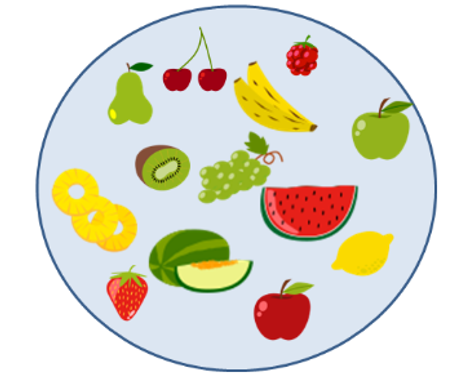
Classification of sets:
A set can be classified by the number of elements it has. It is:
- Finite: if it has a collection that can be counted, even though it may be difficult to do so. For example, the set of fruit includes all the types of fruit there are in the world. Even though it may be difficult, all the types of fruit in the world could be counted, therefore it is finite.
- Infinite: if it has a collection that can never finish being counted. For example, a set of all the even numbers (which are infinite) is an infinite set.
Relationships between sets:
In terms of the relationship between them, sets can be:
- Disjoint sets: those sets which do not have any element in common.
For example, the sets of fruit and animals are disjoint, because there is no fruit which can be an animal and there is no animal which can be a fruit:
DISJOINT SETS

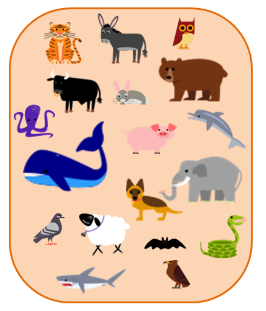
- Equal Sets: it happens when all the elements of one set belong to the other.
For example, the set of red fruit and the set of yellow fruit are equal sets of fruit, since all the red fruit is fruit and all the yellow fruit is also fruit.
SUBSETS
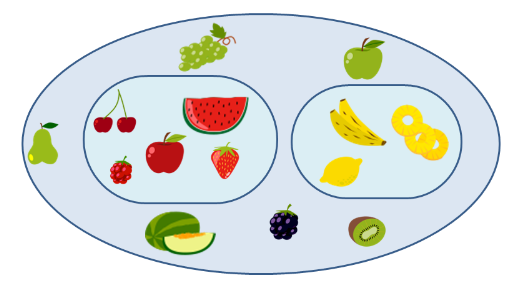
The set of living things is very big: it has a lot of subsets. For example:
- Plants are a subset of living things.
- Animals are a subset of living things.
- Human beings are a subset of animals.
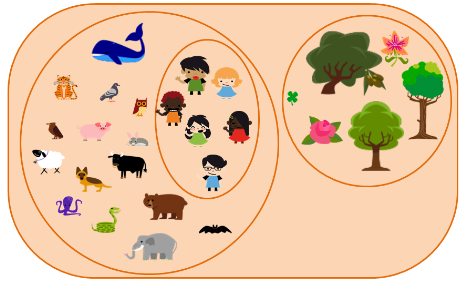
Subset intersection: sometimes, various sets are different but share some common elements. An area of intersection is then defined which contains all the common elements.
For example, we have a set of girls and another set of people who wear glasses. Since there are girls who wear glasses, they form part of the intersection of the two sets:
INTERSECTION
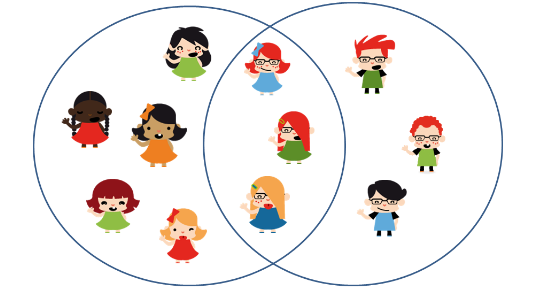
What do you think of this post? Has it helped you to better understand sets and subsets?
If you want to practice these types of set exercises and much more, sign up and try Smartick free trial.
Learn More:
- How to Group Sets and Create Venn Diagrams
- Manipulative Games to Practice Set Theory
- Venn Diagrams, Set Diagrams and Logic Diagrams
- Learn about Set Theory and Study Techniques
- Working with Venn Diagrams in Smartick








This post is great and I like it.
l need to know more about sets
Hi Beatrice,
Thank you very much for your comment.
If you want to learn more content like this and practice elementary school math, just sign up at Smartick. You have a free trial period with no strings attached.
If you have any additional questions or doubts you can write to my colleagues of the pedagogical team at [email protected].
Best regards!
I am very interested in this. I hope i will learn a lot.
It is so interesting! l will really benefit from this. Thanks a lot for coming up with this.